Ceiling Fans for Angled Ceilings
Which ceiling fans are most suitable and why?
Angled ceilings create drama and impact in contemporary home design. Sloped ceilings are a popular architectural feature which create the illusion of space, making the room light and airy, and providing a strong focal point. Most pitched rooms have either a single angled (or raked) ceiling, or two sloped ceiling planes meeting along a centre line.
So, how do you ventilate these stylish lofty spaces in your home?
Am I able to install a ceiling fan in my space?
Choosing the right fan can be stressful. Here, we show you how to select the best fan (with the right canopy) for your sloped ceiling.
TIP: The canopy is the domed cap that covers the base of the fan where it meets the ceiling. This is the all-important feature when buying a fan to mount on a pitched surface.
Selecting the right fan from the start will save you time and money. And stop you pulling your hair out when your electrician says – no, this one won’t work here!
We have an extensive range of ceiling fans for angled ceilings. Here are a few models for ceilings angled up to 15 degrees:
Eco Silent Deluxe
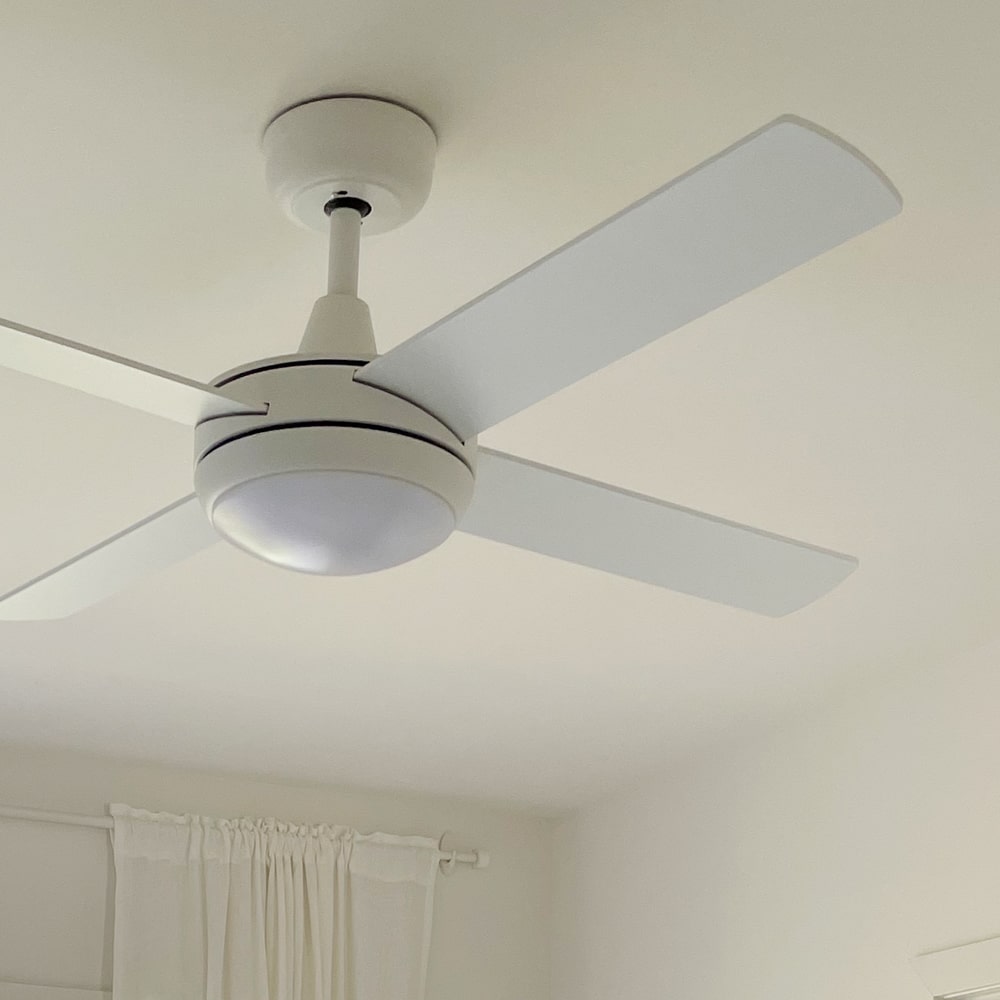
The Eco Silent Deluxe has a canopy suitable for angled ceilings up to 15 degrees. Modern design paired with a classic blade style
Eco Style DC
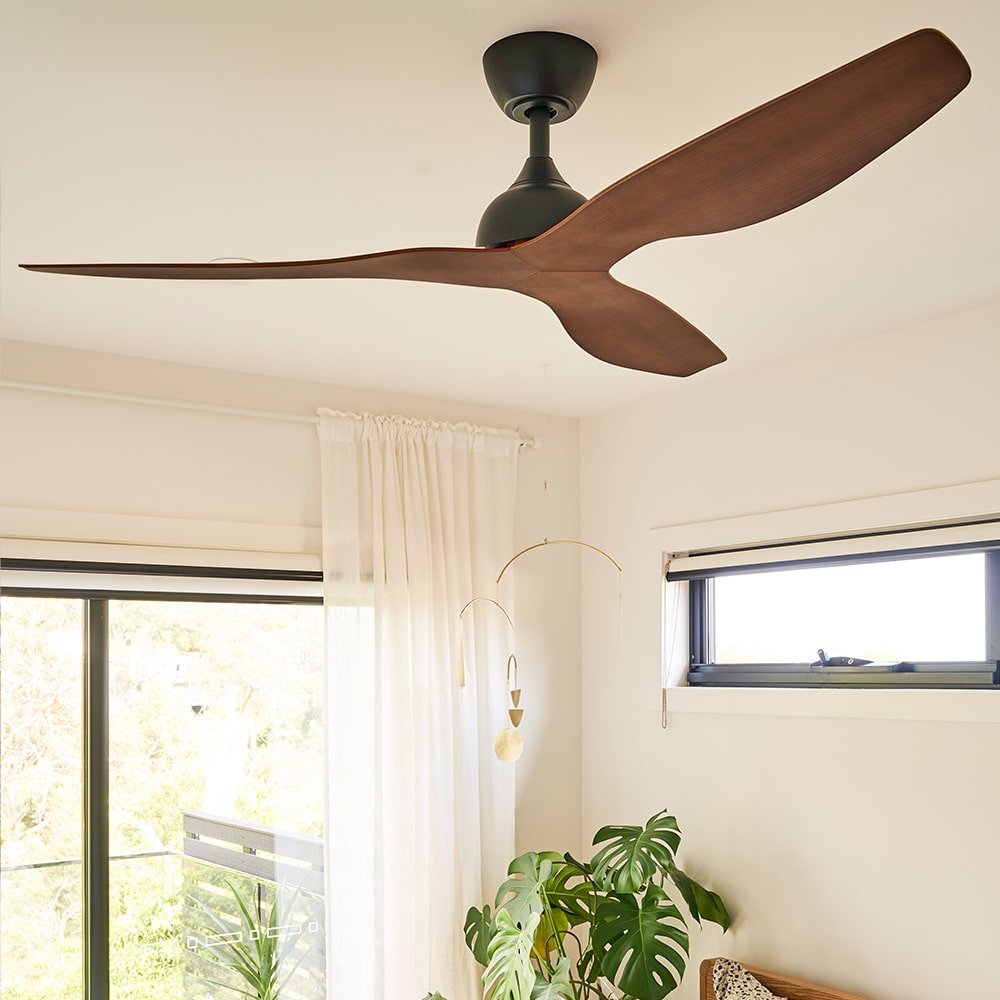
The Eco Style is one of the most popular fans this year, suitable for angles ceilings up to 15 degrees
Claro Whisper DC
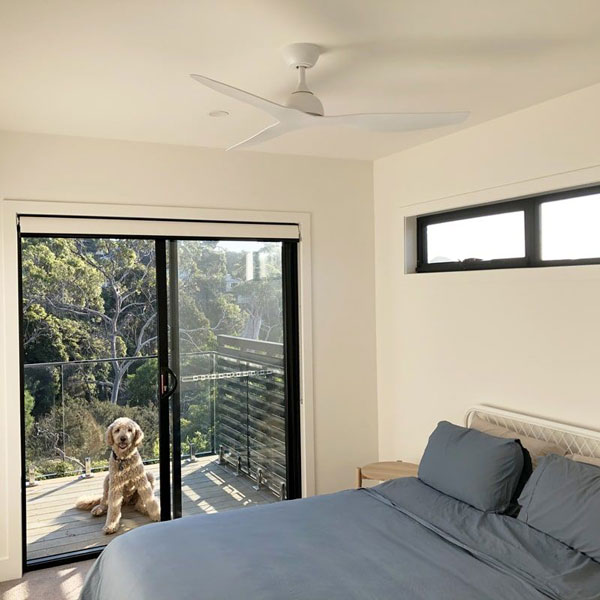
The Claro Whisper has a great design and discrete look to match any home décor. Suitable for angled ceilings up to 15 degrees.
It’s important to choose a ceiling fan designed specially to suit angled ceilings. And the exact angle (or pitch) of your ceiling is important too. Certain ceiling fans work for certain angles. Some suit high pitches, while others work best for low pitches, and some are for flat ceilings only.
So first, you need to calculate the angle of your ceiling. It’s easy with our handy ceiling angle calculator.
Calculating your Ceiling Angle
When calculating your ceiling angle, you need to know the rise and the run of your ceiling. Sound tricky? Not at all.
The rise is the difference between the highest point (A) and lowest point (B) of your ceiling. And the run is the distance between the highest point (A) and the lowest point (B) of your ceiling.
Important: When calculating the run, the distance is measured straight along the floor, not following the ceiling slope up.
How to calculate your ceiling angle
We’ve put together an easy table to help you work out how steep your ceiling is. We’ve done the hard work of calculating the angles, but before you can use the table, you will need to know your ceiling’s rise and run. If you’re not familiar with these terms, don’t worry! Just follow the steps below, and you’ll be ready to use the table.
You will need:
- Measuring tape
- Ladder
- A friend
- The table at the bottom of this page
Step 1: Ask your friend to help you measure the ceiling height at its highest point of the slope you’d like to install your fan on. Make a note of the height, and call it Point A.
Step 2: Measure the ceiling height at its lowest point, this is Point B.
Step 3: To find the “Rise” we mentioned earlier, Subtract Point B from Point A. Once you have the answer find the corresponding number on the top row of our Ceiling Rake Calulator Table below.
Step 4: Measure the horizontal distance between Point A and Point B. This is called the “Run”
Step 5: Use the table below to find your ceiling angle. If your ceiling rake exceeds 44 degrees, we don’t carry any suitable products for your ceiling at present. You may need to consider a wall fan or pedestal fan.
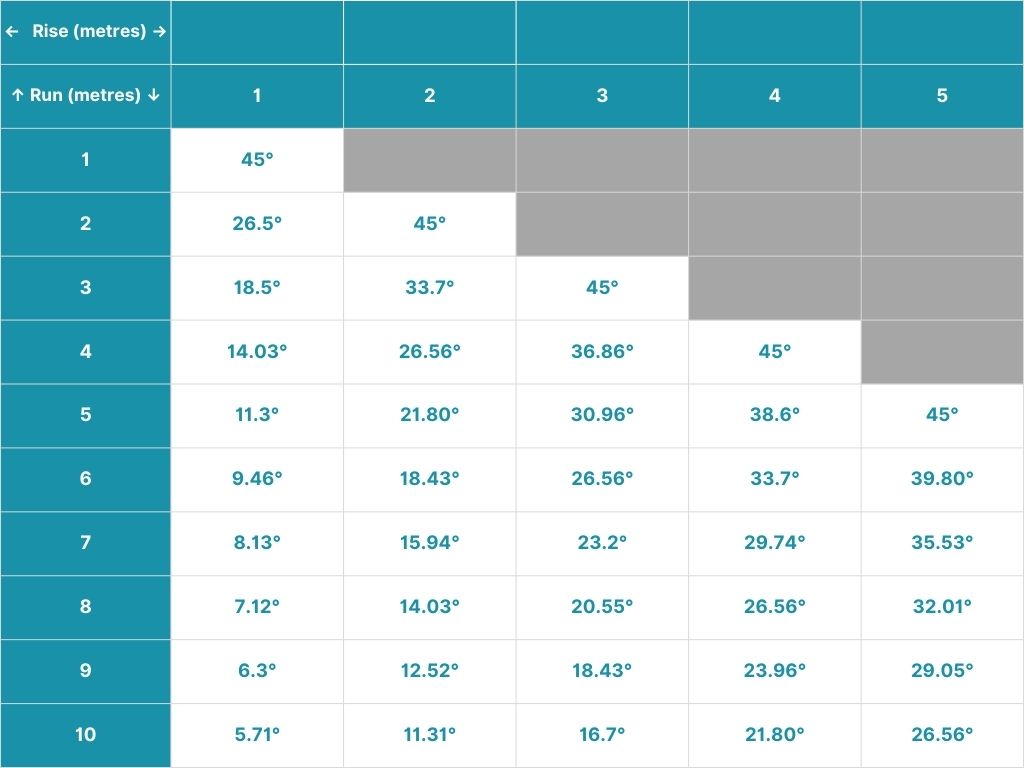
Check the exact specifications on the fan model you’re interested in to see the maximum ceiling angle the fan works for.
Which types of fans are suitable for sloped ceilings?
Fans with a ball-joint mechanism are designed for both flat and angled ceilings. The ball joint sits inside the ceiling and allows the fan to hang straight down from either a flat or pitched surface.
If you need extra clearance for your fan blades, you can add a rod extension kit to your fan to make it hang lower.
Important note: Most AC motor ceiling fans are wall controlled. If you plan to add a remote control to your AC motor fan, this may limit your choices of fan for sloped ceilings.
Why?
The remote’s receiver sits inside the fan’s canopy at the base of the fan. This takes up space and can limit how far the fan can tilt. We try to list the maximum ceiling angle – both with and without remote control – for each model. Sometimes this information isn’t available at time of publication. Please check with our helpful team if you’re not sure.
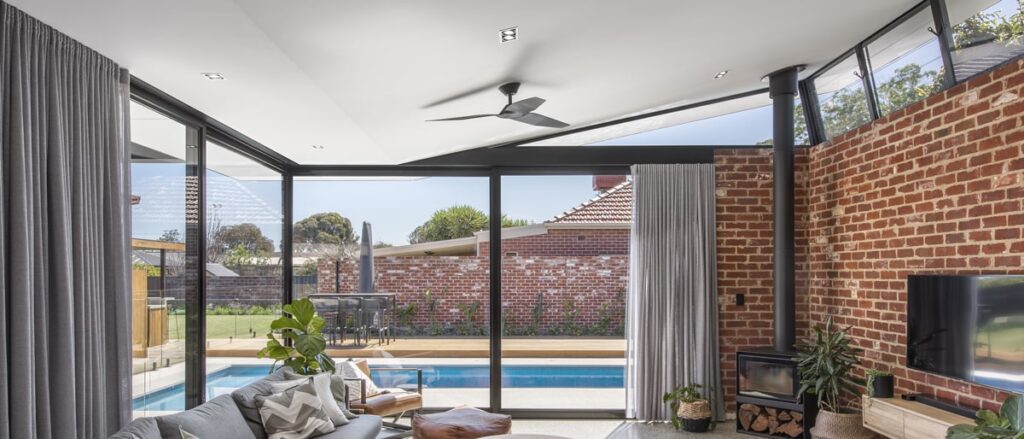
Image Credits – Plympton Residence – Project by Contech, Photography David Sievers
Examples of ceiling fan models suited to different ceiling angles
Best Choice for Flat or Low Ceilings
Studio DC
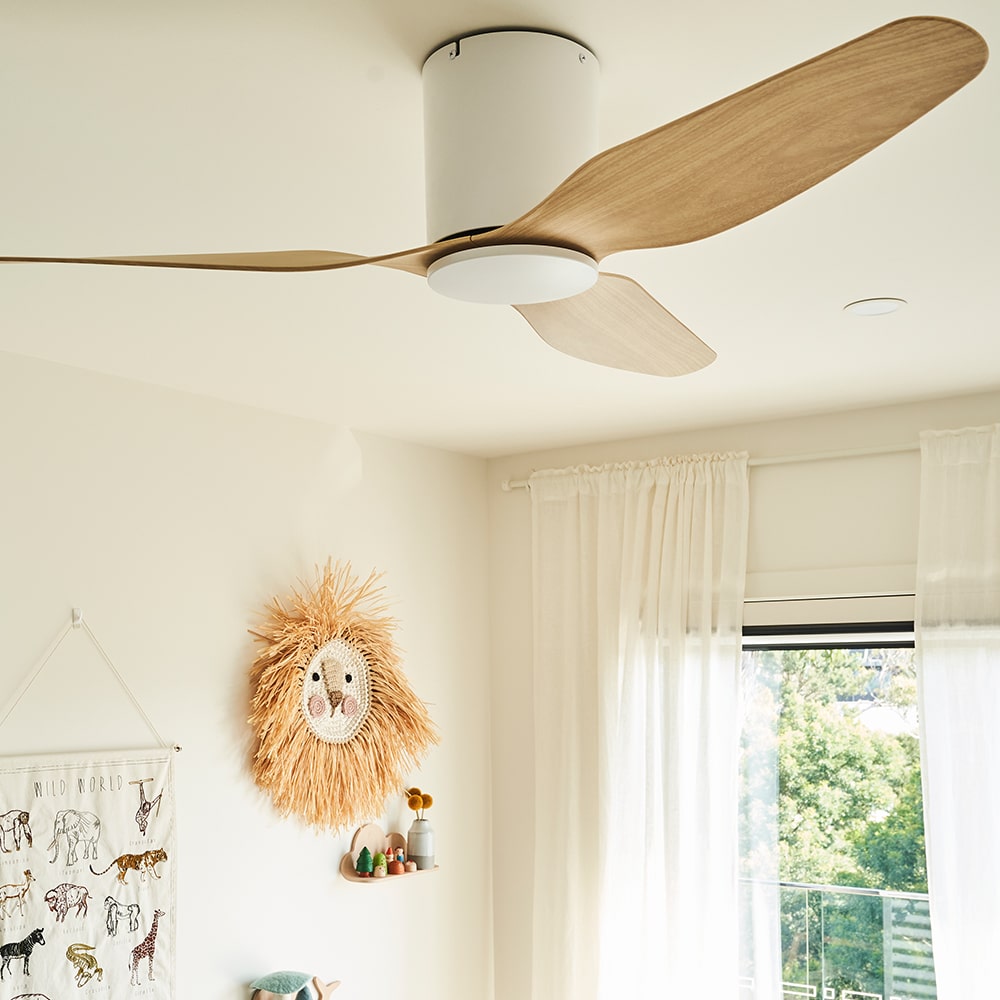
A sleek, low-profile fan suitable for flat or low ceilings only: ceilings with low or no rake.
Best Choice for Small Rakes
Infinity ID DC
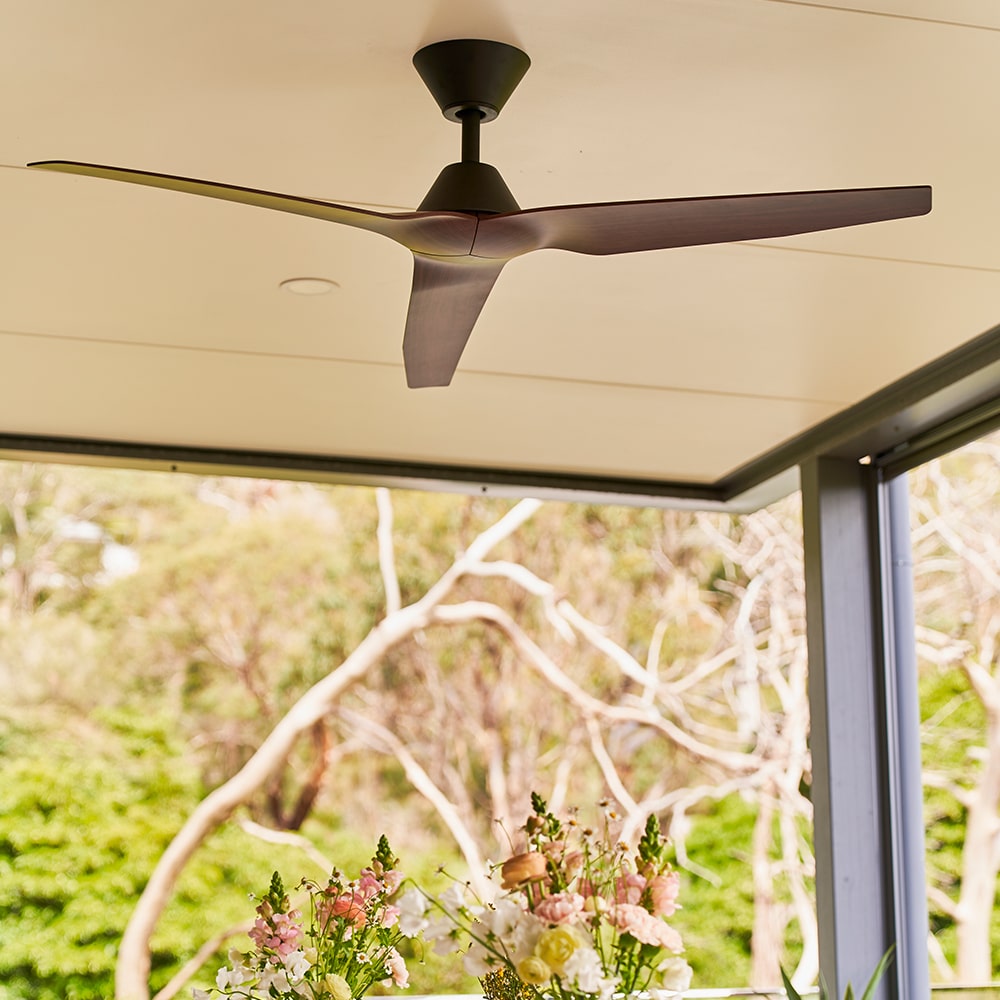
A powerful contemporary fan for indoor and outdoor use, suitable for a small rake only: low ceiling angle
Accessory Options for High-Pitched Ceilings
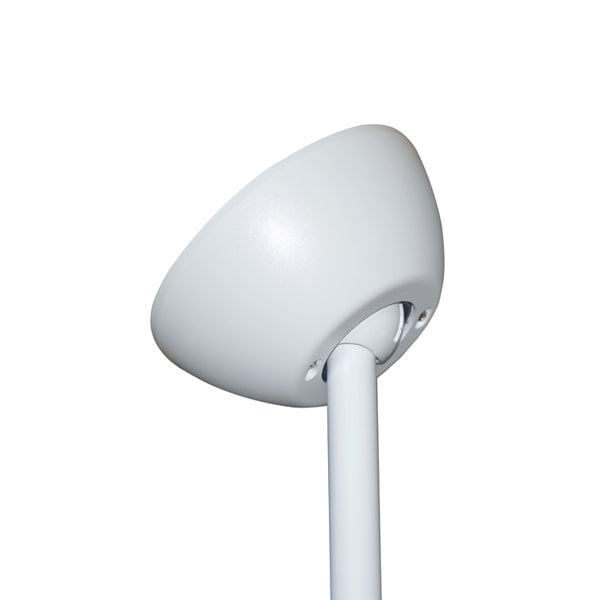
If you have a highly angled ceiling another option is using a ceiling mount kit. The Hunter Pacific rake kit is used for modifying a range of compatible fans, making them suitable for high-pitched ceilings up to 38 degrees. If you have a highly angled ceiling (more than 20 degrees), we would highly recommend you contact us directly to find the best option for you.
Borrowing from the drama and appeal of traditional cathedral ceilings, angled ceilings add style and panache to your contemporary home. And the perfect ceiling fans complete the picture. If you have questions about choosing the best ceiling fan for your sloped ceiling, contact our friendly experienced team for more information.
Other Related Articles:
